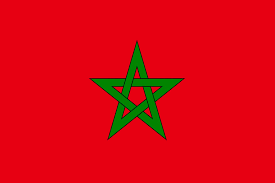Language/Moroccan-arabic/Grammar/Adjectives
Hi Moroccan Arabic learners! 😊
In this lesson, we will be focusing on adjectives in Moroccan Arabic. Adjectives are words that describe or modify nouns or pronouns. It is important to learn how to use adjectives to enhance your communication skills and to express yourself accurately. We will be covering different aspects of adjectives such as their placement, agreement, and comparison.
With the completion of this lesson, consider investigating these related pages: Alphabet and Pronunciation in ..., How to use “can” in Moroccan Arabic, Verbs & The verb To learn.
Placement of Adjectives[edit | edit source]
In Moroccan Arabic, adjectives are usually placed after the noun they modify. For example:
| البقلاوة | al b'qlawa | كثير السكر | Very sweet |
|---|---|---|---|
| الكتاب | al kitab | جديد | New |
| المدرسة | al madrasa | كبيرة | Large |
Note that there are some adjectives that come before the noun such as "جميل" and "قديم". In these cases, the adjective usually has a specific meaning.
Agreement of Adjectives[edit | edit source]
In Moroccan Arabic, adjectives must agree with the noun they modify in gender and number. This means that if the noun is masculine, the adjective must be masculine, and if the noun is feminine, the adjective must be feminine. For example:
| الطالب | al talib | مجتهد | Diligent (masculine singular) |
|---|---|---|---|
| الطالبة | al taliba | مجتهدة | Diligent (feminine singular) |
| الطلاب | al tullab | مجتهدون | Diligent (masculine plural) |
| الطالبات | al talibat | مجتهدات | Diligent (feminine plural) |
As you can see from the examples above, the adjective "مجتهد" (diligent) changes depending on the gender and number of the noun it describes.
Comparison of Adjectives[edit | edit source]
In Moroccan Arabic, adjectives have three degrees of comparison: positive, comparative, and superlative.
Positive Degree[edit | edit source]
The positive degree is the basic form of the adjective. For example:
| عالي | Aali | Tall/high |
|---|---|---|
| حلو | Hlou | Sweet/nice |
Comparative Degree[edit | edit source]
The comparative degree is used to compare two things or people. In Moroccan Arabic, the comparative is usually formed by adding "-أكثر" to the end of the adjective for masculine and "-أكثرة" for feminine. For example:
| كبير | Kebir | أكبر | Bigger |
|---|---|---|---|
| جميل | Jamil | أجملة | More beautiful |
Superlative Degree[edit | edit source]
The superlative degree is used to describe something or someone as the highest or most. In Moroccan Arabic, the superlative is usually formed by adding "-أكثر-أ" to the end of the adjective for masculine and "-أكثر-ة" for feminine. For example:
| صغير | Sghir | أصغرأ | Smallest |
|---|---|---|---|
| غني | Ghni | أغنىة | Richest |
Practice Dialogue[edit | edit source]
A: البقلاوة حلوة؟ (Al b'qlawa hloua?) (Is the baklava sweet?) B: نعم، كثير السكر. (Na'am, ktheer ssukar.) (Yes, very sweet.)
A: كيف الجو بكرة؟ (Kif ljou bokra?) (How's the weather tomorrow?) B: سيئ. الجو بكرة بارد جدا. (Sayyè'. Ljou b-khra brrdd jdda.) (It's bad. The weather tomorrow will be very cold.)
A: مدرستنا كبيرة. (Mdrstna kbyra.) (Our school is big.) B: نعم، والمدرسين مجتهدون. (Na'm, w lmrdsin mjtahdon.) (Yes, and the teachers are diligent.)
➡ If you have any questions, please ask them in the comments section below.
➡ Feel free to edit this wiki page if you think it can be improved. 😎
Other Lessons[edit | edit source]
- The Locative Case in Moroccan Arabic
- Possessive Pronouns
- Nouns
- The verb "To work"
- The Ablative Case in Moroccan Arabic
- The verb "to sleep"
- How to Use Have
- Verbs
- The Genitive Case in Moroccan Arabic
- Negation

